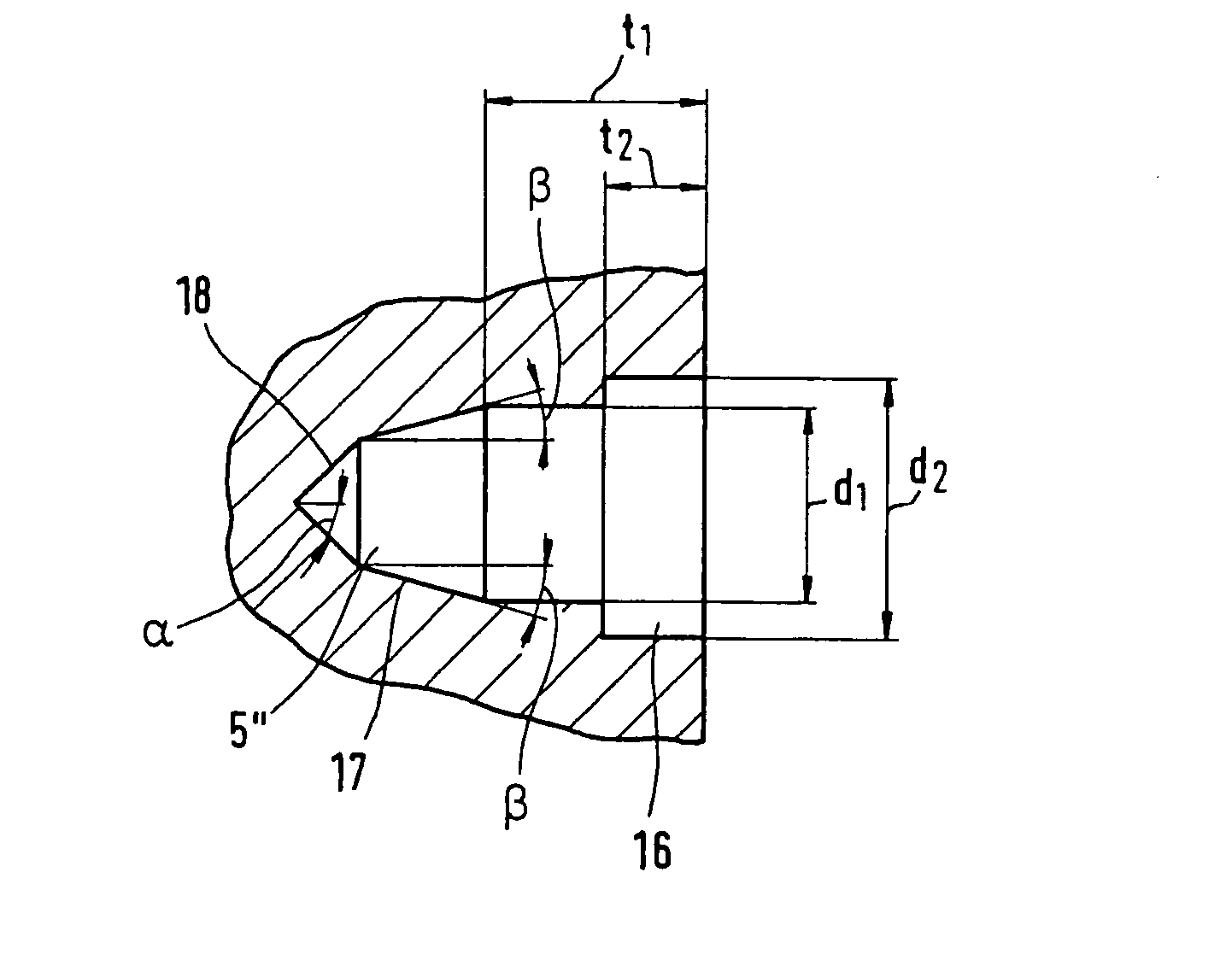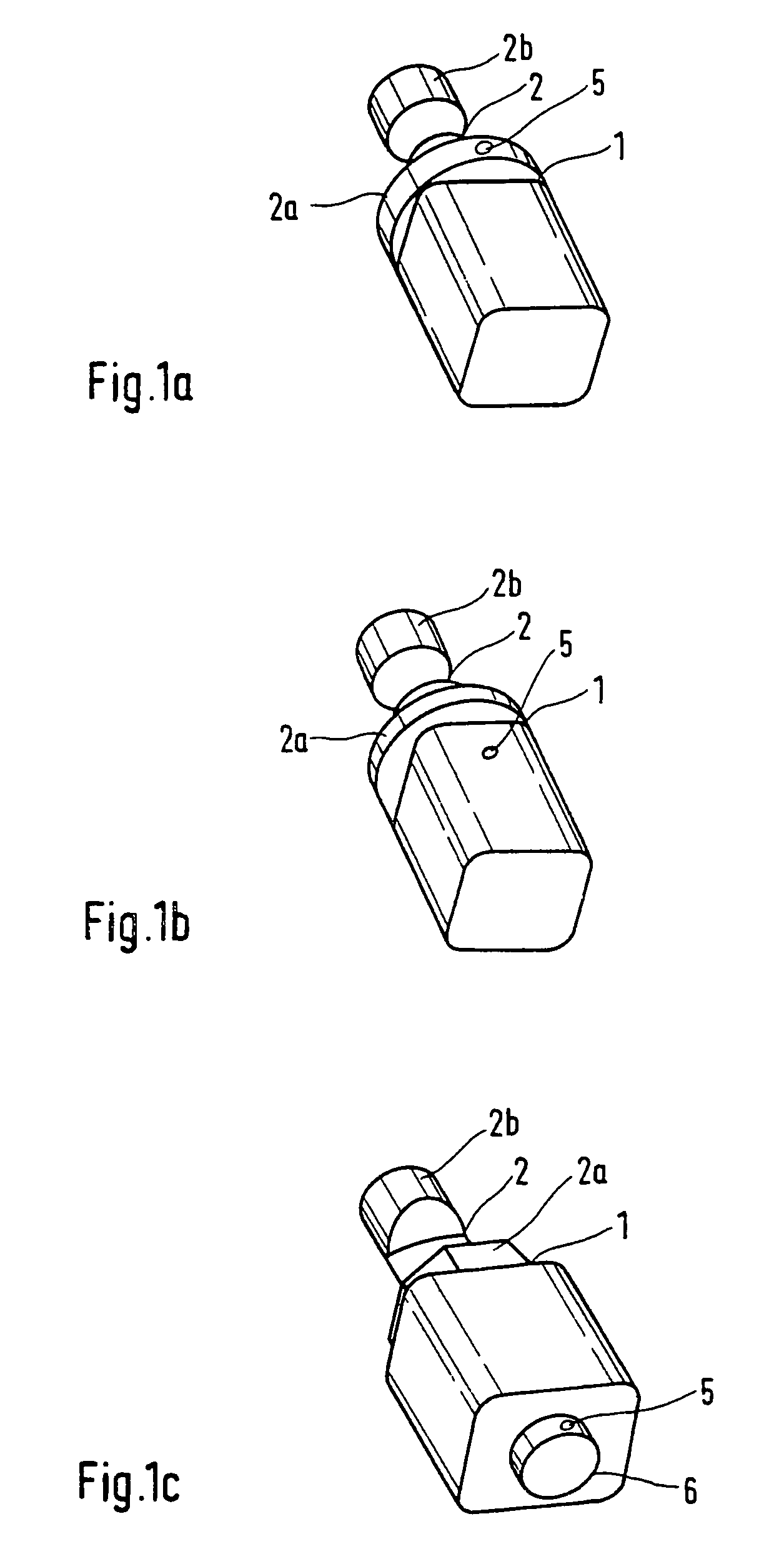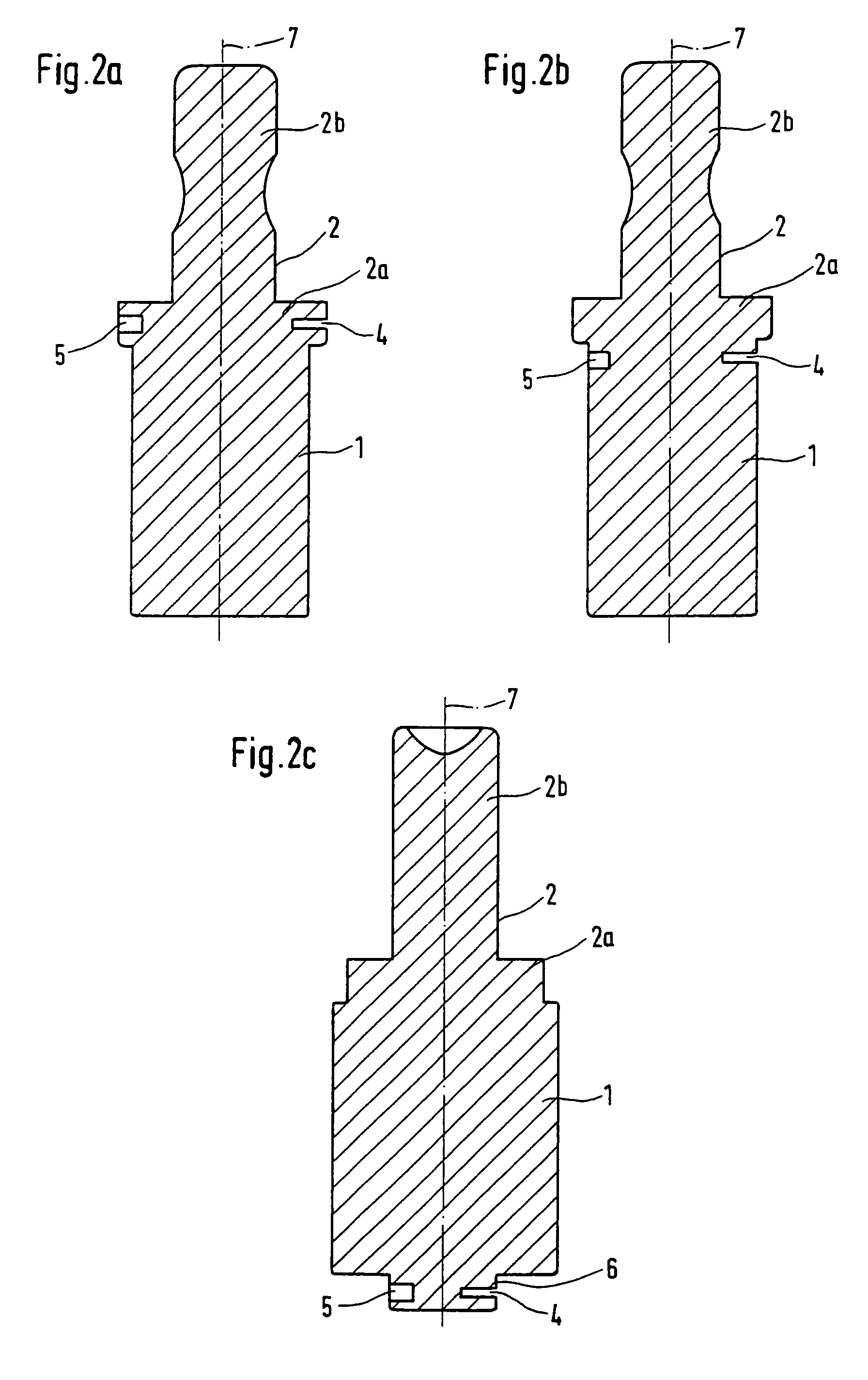Blank for producing dental shaped parts and method for producing the shaped part
a technology for dental shaped parts and shaped parts, which is applied in the direction of dental articulators, dental prosthetics, tooth crowns, etc., can solve the problems of particularly well recognized tool setup errors, and achieve the effect of ensuring high quality of shaped parts and reducing down times
- Summary
- Abstract
- Description
- Claims
- Application Information
AI Technical Summary
Benefits of technology
Problems solved by technology
Method used
Image
Examples
Embodiment Construction
[0049]The blank of FIG. 1a contains a corpus 1, which can consist of a material commonly used in dental technology, e.g., a ceramic material, but also of any other dimensionally stable material such as metal or plastics, from which the shaped part will be fabricated by means of a material removal machining process. The corpus 1 of the blank is advantageously circular or rectangular in cross section. The front end of the corpus of the blank is adjoined by a cylindrical handle 2 in known manner.
[0050]The material of handle 2 can be identical with, or different from, that of the corpus 1. In the case of different materials, blank corpus 1 will be fastened to handle 2, for example by gluing. For this purpose, handle 2 exhibits, for example, a circular cylindrical flange 2a having a diameter that is sufficient to ensure secure attachment to corpus 1, and a shaft 2b for insertion into the machining equipment. Shaft 2b is designed to fit into a predefined socket on the machining equipment....
PUM
| Property | Measurement | Unit |
|---|---|---|
| thickness | aaaaa | aaaaa |
| thickness | aaaaa | aaaaa |
| diameter | aaaaa | aaaaa |
Abstract
Description
Claims
Application Information
 Login to View More
Login to View More - R&D
- Intellectual Property
- Life Sciences
- Materials
- Tech Scout
- Unparalleled Data Quality
- Higher Quality Content
- 60% Fewer Hallucinations
Browse by: Latest US Patents, China's latest patents, Technical Efficacy Thesaurus, Application Domain, Technology Topic, Popular Technical Reports.
© 2025 PatSnap. All rights reserved.Legal|Privacy policy|Modern Slavery Act Transparency Statement|Sitemap|About US| Contact US: help@patsnap.com



